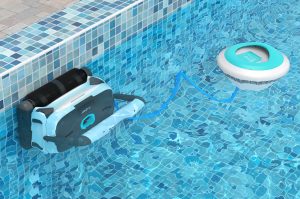If you’re planning to move, or you just need to move your refrigerator from one place to another, you might be wondering whether it’s okay to lay a refrigerator on its side. There’s a lot of conflicting information out there about this topic, so today, we’ll explore the issue in more depth, and provide you with some guidance on what to do.
Why People Ask This Question – Can You Lay a Refrigerator on its Side?
There are a few different reasons why people ask whether it’s okay to lay a refrigerator on its side:
- They’re moving house, and need to transport the refrigerator to their new home.
- They’re renovating or redecorating their home, and need to move the refrigerator temporarily.
- They’re cleaning the back of the refrigerator or doing some maintenance work, and need to access the compressor or other parts that are on the back of the unit.
The Short Answer
The short answer to the question of whether you can lay a refrigerator on its side is “yes, but with some caveats”. Depending on the type of refrigerator you have, how long you plan to lay it on its side, and whether you follow some specific procedures when laying it down and standing it up again, you may be able to safely lay your refrigerator on its side without damaging it.
The Long Answer
If you want to know more about whether you can lay a refrigerator on its side, and what to watch out for when doing so, read on!
Why Laying a Fridge on its Side is Okay
Refrigerators are designed to operate in an upright position, but laying them on their side for a short period of time is actually okay. Here’s why:
- Refrigerators contain a cooling substance called refrigerant, which circulates through the compressor and the coils to cool the inside of the unit. Want to learn more? You can read our post on how modern refrigerators work.
When a refrigerator is laid on its side, the refrigerant can flow into the compressor, which can cause damage to the unit. However, most modern refrigerators are designed with a safety mechanism that prevents the refrigerant from flowing into the compressor when the unit is laid on its side.
- If you’re only laying your refrigerator on its side for a short period of time (less than an hour), the amount of damage that can be caused to the unit is minimal. After about an hour, the refrigerant can start to flow into the compressor, which can cause damage. However, this is only a concern if the refrigerator is left on its side for a longer period of time.
How to Lay a Refrigerator on its Side
If you’ve decided to lay your refrigerator on its side, there are some steps you can take to minimize the risk of damage:
- Remove all food and shelves from the refrigerator. This will help prevent damage to the interior of the unit, and reduce the weight of the refrigerator, making it easier to move.
- Unplug the refrigerator from the power source, and disconnect any water or gas lines that are connected to the unit.
- Secure the doors of the refrigerator with a strap or rope, so they don’t swing open when the unit is being moved.
- Use a dolly or hand truck to move the refrigerator. This will make it easier to move the unit without damaging it.
- When laying the refrigerator down, make sure it’s on a flat surface, and that it’s not leaning to one side or the other.
- If possible, prop the refrigerator up at a slight angle, so the compressor is at a higher elevation than the rest of the unit. This will help prevent refrigerant from flowing into the compressor.
How to Stand a Refrigerator Back Up
Once you’ve transported your refrigerator to its new location, or finished the maintenance work you needed to do, it’s time to stand the unit back up. Here’s how to do it:
- Make sure the refrigerator is on a flat surface.
- Use a dolly or hand truck to lift the refrigerator back up to an upright position. Don’t try to lift it by hand, as refrigerators are heavy and can be difficult to maneuver. Don’t have a hand truck? You can get one here
- Once the refrigerator is in an upright position, let it sit for at least 30 minutes before plugging it back in. This will allow the oil in the compressor to settle back into its original position and prevent damage to the unit.
Types of Refrigerators
There are at least 4 main types of modern refrigerators; but for the purpose of the subject, we’ll only talk about 2: top-freezer and side-by-side. These two types of refrigerators have their own considerations when it comes to laying them on their side.
Top-Freezer Refrigerators
Top-freezer refrigerators have a freezer compartment on top of the refrigerator compartment. If you need to lay a top-freezer refrigerator on its side, follow these guidelines:
- Lay the refrigerator on its back, with the freezer on top. This will help prevent damage to the compressor and the coils.
- Make sure the doors are secured shut with a strap or rope.
- When standing the refrigerator back up, make sure the compressor is at a higher elevation than the rest of the unit.
Side-by-Side Refrigerators
Side-by-side refrigerators have the refrigerator compartment on one side, and the freezer compartment on the other side. If you need to lay a side-by-side refrigerator on its side, follow these guidelines:
-Place the refrigerator horizontally, ensuring that the freezer compartment is facing upwards. This precautionary step will minimize the risk of harming the compressor and coils.
-Ensure that the refrigerator doors are firmly closed and secured using a strap or rope.
-When repositioning the refrigerator in an upright position, ensure that the compressor is positioned at a higher level compared to the rest of the unit.
Conclusion
Yes, you can lay a refrigerator on its side, but not for long, as refrigerators are built to stand upright. Follow the guidelines provided in this guide to safely lay your refrigerator down and stand it back up again without causing damage to the unit. If you’re not comfortable laying your refrigerator down yourself, or if you’re concerned about damaging the unit, you can always hire a professional moving company to do it for you. Hope this helps!






